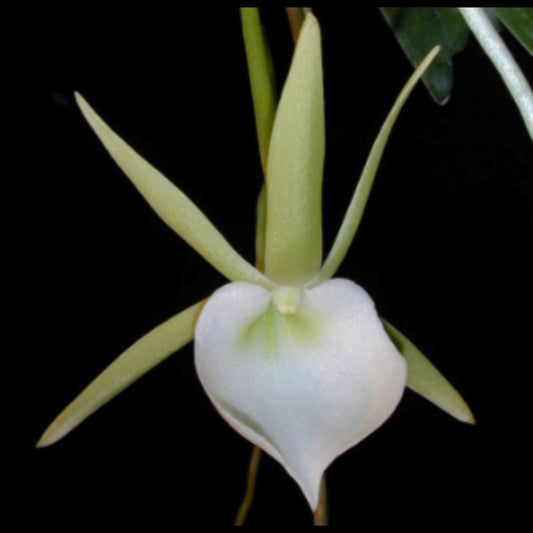
Why and How Light Levels Impact Orchid Bloom Colors
Share
Why Light Matters
Light is essential for photosynthesis, the process by which plants convert light energy into chemical energy to fuel their growth and development. However, light does more than just sustain the plant—it also influences the pigments responsible for the color of the blooms.
-
Photosynthesis and Pigment Production: Light is a critical component in photosynthesis, which affects chlorophyll production and other pigments. The amount and quality of light a plant receives can directly influence the intensity of these pigments, which in turn, impacts the color of the flowers. For instance, insufficient light can lead to dull or pale blooms, while the right amount of light can intensify the colors.
-
Anthocyanins and Carotenoids: Two primary pigments responsible for the colors in orchid flowers are anthocyanins (which produce red, purple, and blue hues) and carotenoids (which produce yellow, orange, and red hues). The production of these pigments is heavily influenced by light. For example, higher light levels can enhance the production of anthocyanins, leading to deeper reds and purples.
-
Environmental Adaptation: Orchids have evolved to adapt to their natural environments, which often includes varying light levels. The colors of orchid blooms are often a reflection of these adaptations, allowing the plant to attract specific pollinators or to protect itself from excessive light. Understanding this natural inclination can help growers replicate the ideal conditions for vibrant colors.
How Light Levels Affect Bloom Colors
The intensity, duration, and spectrum of light all play a role in determining the color of orchid blooms. Here’s how each aspect of light affects flower color:
-
Light Intensity:
- High Light: Orchids exposed to higher light levels tend to produce more intense and saturated colors. The increased light stimulates the production of anthocyanins, resulting in deeper reds, purples, and blues. However, too much light can bleach the colors or cause the plant to produce fewer flowers as it focuses on survival rather than reproduction.
- Low Light: Orchids receiving low light levels may produce pale or washed-out colors. Inadequate light reduces the production of pigments, resulting in less vibrant blooms. Some orchids may also produce fewer flowers under low light conditions.
-
Light Duration:
- Long Days: Prolonged exposure to light can lead to the production of brighter and more vivid colors. This is especially true for orchids that naturally thrive in environments with long daylight hours.
- Short Days: Shorter light durations can result in softer, less intense colors. Some orchids might also delay blooming or produce fewer flowers if the light duration is insufficient.
-
Light Spectrum:
- Blue Light: Blue light is essential for vegetative growth but also plays a role in flower color development. It can enhance the production of certain pigments, leading to more vibrant blues and purples.
- Red Light: Red light is crucial for flowering and can influence the intensity of red and orange hues in the blooms. The right balance of red light can lead to more saturated and vibrant colors.
- Full Spectrum Light: Full-spectrum light, which mimics natural sunlight, is ideal for orchids as it provides the necessary balance of wavelengths for both growth and color development. It ensures that the plant receives the right combination of light to produce vivid and healthy blooms.
Practical Tips for Managing Light to Enhance Bloom Colors
To achieve the most vibrant orchid blooms, it’s essential to manage light levels carefully. Here are some practical tips:
-
Know Your Orchid’s Light Requirements: Different orchids have varying light needs. For instance, Vandas and Cattleyas thrive in bright light, while Phalaenopsis and Paphiopedilum prefer moderate to low light. Research your orchid’s natural habitat and provide similar light conditions.
-
Use Grow Lights: If natural light is insufficient, consider using grow lights. Full-spectrum LED lights are an excellent option as they provide the necessary wavelengths for both growth and color development. Position the lights at an appropriate distance to avoid overheating the plants.
-
Monitor Light Duration: Ensure that your orchids receive the right amount of light each day. For most orchids, 12-14 hours of light is ideal. Adjust the duration based on the specific needs of your plants.
-
Protect from Excessive Light: While light is essential, too much direct sunlight can scorch the leaves and bleach the blooms. Use shade cloths or move your orchids to a location with filtered light if necessary.
-
Observe and Adjust: Pay attention to the colors of your orchid blooms over time. If you notice that the colors are fading or becoming less vibrant, consider adjusting the light levels. Sometimes, slight changes in the intensity or duration of light can make a significant difference in the bloom colors.
Conclusion
Light is a powerful tool in the hands of an orchid grower. By understanding how light levels influence bloom colors, you can create the perfect environment for your orchids to thrive and produce the most stunning flowers. Whether you’re growing orchids for personal enjoyment or as part of a collection, managing light effectively is key to unlocking the full potential of your plants’ natural beauty. Experiment with different light conditions and observe the results—your orchids will reward you with colors that are as vibrant as they are unique.
This also explains why, in some cases, the same orchid species or even the same plant can show variations in color intensity compared to another of the same kind. Differences in light exposure, even subtle ones, can lead to noticeable changes in the vibrancy and hue of the blooms, making each flowering experience uniquely beautiful.








